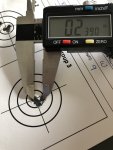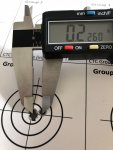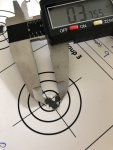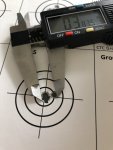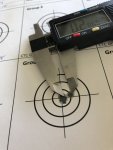There has been some talk on the 6X5 about a standard to use to determine a CTC measurement. I have always used 0.222” as that is what the original discussion way back when this all started kinda settled on. Some people have different opinions and that is great, I am open to anything. I do agree with implementing a “standard” so every submission is as equal as possible (for comparasion sake). I will implement this in the next version which I will start 01/01/21, so we have time to talk it over and decide.
I would also like to suggest that we all start submitting measurements down to the thousandth. I know many people will argue that you can not accurately measure to that resolution, which may be true but I will argue that being off 0.001”- 0.002” from actual is much closer than being off by 0.009” at very best if you are only measuring to the hundredth as opposed to getting as close as you can to the thousandth. Just my opinion, thoughts?
On the topic of a standard I think 0.222” should be the very largest we use. I have NEVER seen a bullet hole measure larger from a rimfire. I think this is mainly because most bores Have a grove diameter of 0.222” or smaller, at least in precision barrels.
Thank you for your time in advance in helping me make the 6X5 thread as good as it can be!
I would also like to suggest that we all start submitting measurements down to the thousandth. I know many people will argue that you can not accurately measure to that resolution, which may be true but I will argue that being off 0.001”- 0.002” from actual is much closer than being off by 0.009” at very best if you are only measuring to the hundredth as opposed to getting as close as you can to the thousandth. Just my opinion, thoughts?
On the topic of a standard I think 0.222” should be the very largest we use. I have NEVER seen a bullet hole measure larger from a rimfire. I think this is mainly because most bores Have a grove diameter of 0.222” or smaller, at least in precision barrels.
Thank you for your time in advance in helping me make the 6X5 thread as good as it can be!

